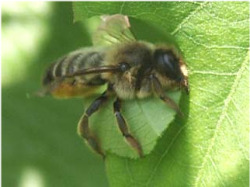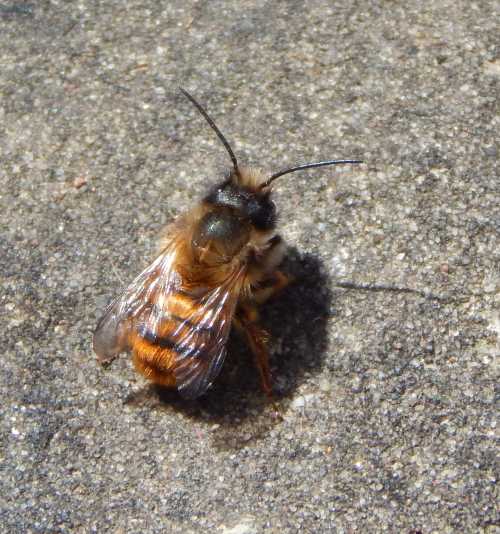Which Bees Dig In The Ground?
Bees may be observed digging in soil, sandy banks and lawns. There are even some species that sort the grains of soil in their nests!
Mostly, bees burrow into the ground in order to create a nest where they can lay eggs. Hibernation is a further reason, however, parasites may also be the cause, especially where bumble bees are concerned.
How do they do it?
There may be variations between species, however, tend to use their front legs with the aid of their mandibles (jaws) to loosen the dirt. They then ‘shovel’ the loosened dirt away with their legs. The pile of dirt or sandy soil may sometimes be seen as a little mound above the nest entrance.
Which Bees Dig Holes And Tunnels In The Ground?
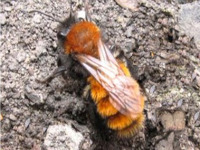 Above: Tawny mining bee Andrena fulva
Above: Tawny mining bee Andrena fulvaHere are a few examples:
Family: Andrenidae
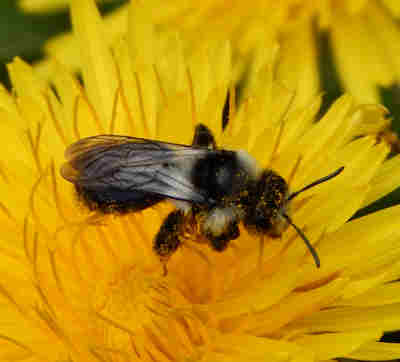 Above - The Ashy mining bee, Andrena cineraria likes grassy slopes.
Above - The Ashy mining bee, Andrena cineraria likes grassy slopes.All members in each genus within the Andrenidae family, nest in the earth, and some prefer particular soil types (from sand to clay) and locations. The Ashy mining bee pictured above, prefers south-facing slopes but with some access to light shade, however, the photograph below was the flat site of a group (aggregation) of mining bees (species unidentified).
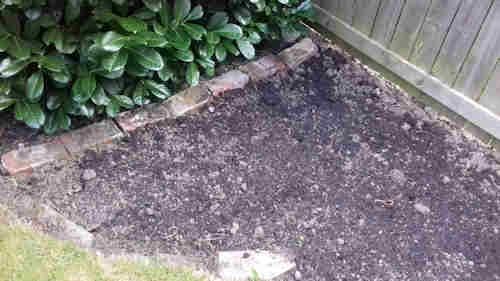
There is also great variety not only in preferred conditions, but also tunnel structure: whilst some bees dig shallow holes – perhaps just a few inches, others bees dig deep tunnels. Wilson and Messinger Carril, in their
book The Bees in Your Backyard:
A Guide to North America's Bees mention that scientists studying
Andrena haynesi in the Utah desert dug up a nest that actually reached 9 feet
underground!
They point out that this is the equivalent of a 6-foot-tall human using his hands to dig to the depth of 4 football fields, thus drawing attention to the fact that to dig 9 feet underground is an incredible feet for a small insect!
Bees can also demonstrate discernment in selection of soil particles for use in nest building. Again, according to the fantastic book by Wilson and Messinger Carrill, Ancylandrena actually sort out the grains of
soil, according to coarseness. The
finest particles are used by the females for creating smooth walls around the
cell containing an egg. Larger particles
are used to block the entrance to the nest at night!
One of the questions that arises is how bees water proof their tunnels from rain. According to Wilson & Messinger Carril - authors of The Bees In Your Backyard, Andrenidae line their nests with a waterproof substance secreted by the female. This is so effective, it can even protect developing bees inside tunnels located in the beds of seasonal lakes, such that the new adults are able to emerge safely once the lake has dried up. This substance not only protects the nest from moisture, it helps protect these ground nesting bees from soil bacteria.
Family: Apidae
The Apidae family comprises about 5,700 bee species and 200 genera around the world. Some of these (but certainly not all), are ground nesting bees, including, for example, bees from the genus Emphorini, Eucerini, Centris – found in North America.
In North America, bees from the genus Habropoda and Anthophora, are also referred to as 'Digger Bees' (although Anthophora furcata nests in twigs instead of the ground) – and they also belong to the family Apidae.
In the UK, some Anthophora make their nests in soil, banks, cliffs or walls.
Some species of Bombus (bumble bees) create nests in ground, often making use of abandoned mouse holes, or a spot in a soft compost heap, however, they may be seen digging in to the ground for other reasons, such as hibernation or parasitic infection. You can read all about it on bumble bees digging in the ground.
Family: Megachilidae
This bee family is diverse. Some species nest in crevices and holes, whilst others may nest underground. Leafcutter bees often use hollow twigs, canes and cavities for their nests, which they typically line with segments of leaf of petal. Some, species however, prefer to create their structures in the ground. For example, the silvery leafcutter bee, Megachile leachella, nests in aggregations in sandy ground - typically in coastal areas.
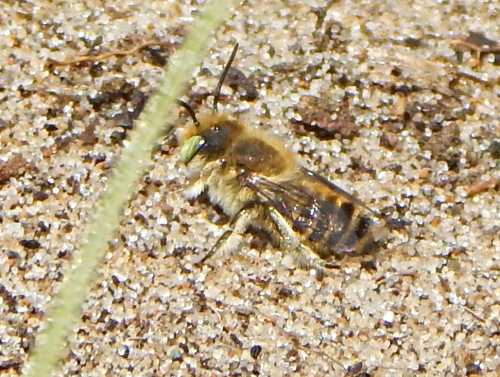 Above: Megachile leachella - the Silvery Leafcutter Bee
Above: Megachile leachella - the Silvery Leafcutter BeeIf you found this page helpful or interesting, I'd really be grateful if you would share it with others - if not this page, perhaps another, such as Gardening For Bees.
Thank you so much :) .
